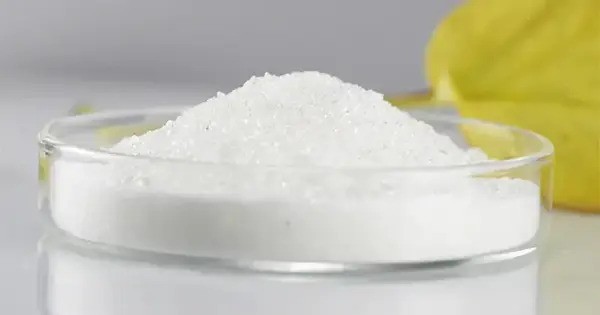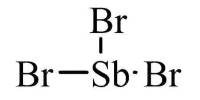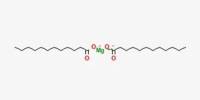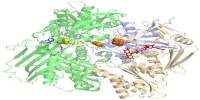Radium chlorate is an inorganic compound with formula Ra(ClO3)2. It is a chemical compound that contains the element radium (Ra) along with the chlorate ion (ClO₃⁻). While pure radium chlorate has never been prepared, it is known to form coprecipitates using barium chlorate as a carrier. These react with excess ammoniacal ammonium carbonate to form a mixed precipitate of radium carbonate with barium carbonate. Its radioactivity requires careful handling due to its hazardous effects on health.
Predicted values of its thermodynamic properties are available from Lowson (1985).
Properties
- Appearance: It is typically a white, crystalline solid.
- Solubility: It is soluble in water, though specific solubility data can vary.
- Chemical Behavior: It behaves similarly to other metal chlorates in terms of its chemical reactions. It can decompose upon heating to release oxygen gas and radium chloride (RaCl₂).
- Oxidizing Agent: Like other chlorates, it can act as an oxidizer in reactions, releasing oxygen and potentially supporting combustion under certain conditions.
- Instability: Being a chlorate, it is relatively unstable and can decompose violently when exposed to heat or shock, releasing oxygen and chlorine.
Synthesis
Radium chlorate is synthesized in a laboratory setting through reactions that involve radium compounds like radium chloride and chlorates. It is not typically found in natural mineral deposits. Solutions containing radium chlorate may be obtained by dissolving soluble radium salts in a solution of barium chlorate:
Ra2+ + Ba(ClO3)2 → Ra(ClO3)2 + Ba2+
Applications
While radium was once used in luminous paints, medical treatments, and research, its use has greatly diminished due to its harmful radiation. Today, radium compounds like chlorates are primarily of academic interest in the study of radioactivity and radiation chemistry. It is claimed to have application in the production of self luminous watch components.
Safety Considerations
- Toxicity: Radium and its compounds are highly toxic due to their radioactivity. Long-term exposure to radium can lead to serious health issues such as radiation poisoning and an increased risk of cancer.
- Handling: Special precautions are necessary when handling radium compounds, including radium chlorate. Proper protective equipment, containment, and disposal procedures are essential to minimize exposure to harmful radiation.
















